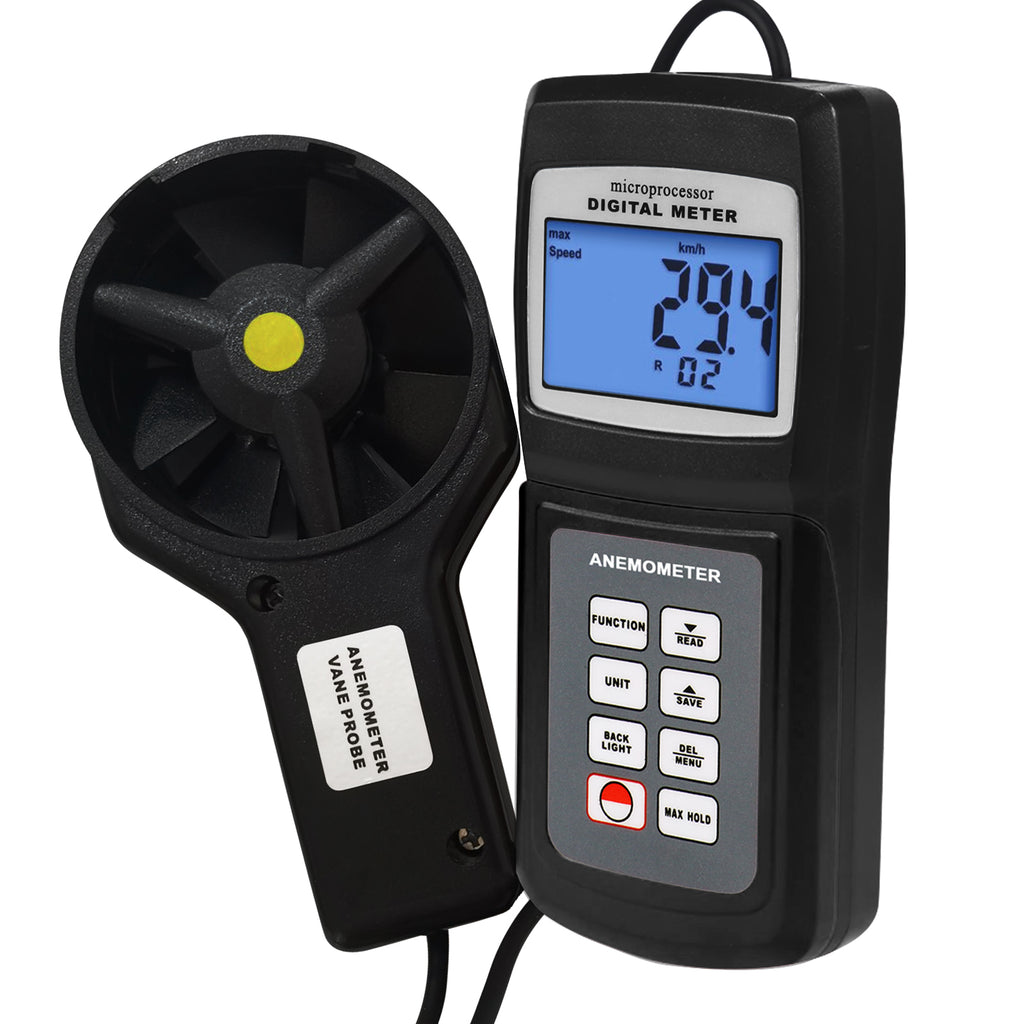Contrasting Digital and Mechanical Anemometers: Which is Right for You?
Contrasting Digital and Mechanical Anemometers: Which is Right for You?
Blog Article
Anemometers Introduced: Comprehending Their Value in Ecological Monitoring and Safety And Security Measures
The role of anemometers in ecological monitoring and safety and security measures is typically undervalued, yet their relevance is obvious. These instruments have a lengthy background rooted in scientific query and technological improvements, evolving to end up being essential devices in different areas. From weather forecasting to air travel safety and security, anemometers play a crucial duty in giving precise data that educates decision-making processes and enhances general safety and security. Recognizing the complexities of anemometers reveals a globe of vital understandings that are basic to our understanding of the environment and the steps we take to make sure safety and security.
History of Anemometers
The advancement of anemometers can be mapped back to the old human beings where rudimentary wind gauging gadgets were very first utilized. One of the earliest well-known anemometers was the hemispherical cup anemometer invented by Leon Battista Alberti in the 15th century.
In the 18th century, the renowned scientist John Thomas Romney Robinson presented the Robinson anemometer, which featured four hemispherical cups installed on straight arms that prolonged from a main axis. This design came to be a requirement in atmospheric measurements as a result of its precision and dependability. Over the years, innovations in modern technology caused the growth of more modern anemometers, consisting of ultrasonic anemometers and laser Doppler anemometers, using increased accuracy and effectiveness in measuring wind speed and instructions. The history of anemometers showcases an amazing trip of development and progress in the area of weather forecasting.
Kinds Of Anemometers
Throughout the area of weather forecasting, various types of anemometers have been created to properly gauge wind speed and direction. Sonic anemometers make use of ultrasonic signals to determine wind rate and instructions accurately. Hot-wire anemometers operate based on the principle that the cooling result of wind on a heated cord is symmetrical to the wind rate.
Applications in Meteorology
Having actually talked about the numerous kinds of anemometers utilized in meteorology for determining wind rate and direction, it is important to explore their functional applications in the field. Anemometers play a crucial function in weather forecasting by providing accurate and real-time information on wind problems (anemometer). Meteorologists make use of anemometers to keep an eye on wind rate and direction to anticipate climate patterns, problem cautions for extreme weather occasions like hurricanes, tornadoes, and tornados, and examine atmospheric conditions for aeronautics security
In weather forecasting, anemometers aid in understanding regional and local wind patterns, which are important for predicting weather adjustments and determining discover here climatic fads. These tools are additionally used in research study to study microclimates, urban warmth islands, and air contamination diffusion. Furthermore, anemometers are used in agriculture to optimize crop administration practices, such as watering and chemical application, based upon wind conditions.
Value in Aviation Safety
An integral facet of ensuring air travel safety and security depends on the careful surveillance of wind problems using anemometers. Anemometers play a critical role in aviation by providing real-time data on wind speed and direction, helping pilots in making notified decisions during touchdown, flight, and liftoff. Unpredictable and solid winds can dramatically impact aircraft operations, making it crucial for aviation authorities to rely upon exact wind dimensions to guarantee the safety and security of travelers and staff.

In the vibrant environment of air travel, where even minor adjustments in wind speed and instructions can have extensive impacts, anemometers stand as vital devices for promoting protected and safe air traveling.
Duty in Environmental Research Study
Anemometers play a vital function in environmental study by providing vital data on wind speed and direction. By properly gauging wind features, anemometers help scientists assess the motion of pollutants in the air, evaluate the influence of commercial exhausts, and predict the spread of impurities in the environment.


Verdict
In verdict, anemometers have actually played an essential role in ecological tracking and safety and security actions. Recognizing the importance of anemometers is necessary for precisely measuring wind rate and direction, which is essential for forecasting climate patterns, guaranteeing safe aviation procedures, and carrying out ecological research studies.
One of the earliest well-known anemometers visit this page was the hemispherical mug anemometer created by Leon Battista Alberti in the 15th century. Over the years, innovations in modern technology led to the growth of even more modern-day anemometers, consisting of ultrasonic anemometers and laser Doppler anemometers, supplying raised accuracy and performance in determining wind speed and instructions. Hot-wire anemometers run based on the concept that the cooling effect of wind on a warmed cable is proportional to the wind speed. Meteorologists utilize anemometers to keep track of wind speed and direction to forecast weather patterns, concern cautions for serious climate events like storms, tornados, and twisters, and analyze atmospheric problems for aviation safety and security.
Understanding the relevance of anemometers is essential for precisely gauging wind rate and direction, which is essential for forecasting climate patterns, making sure risk-free aeronautics procedures, and performing ecological research studies. (anemometer)
Report this page